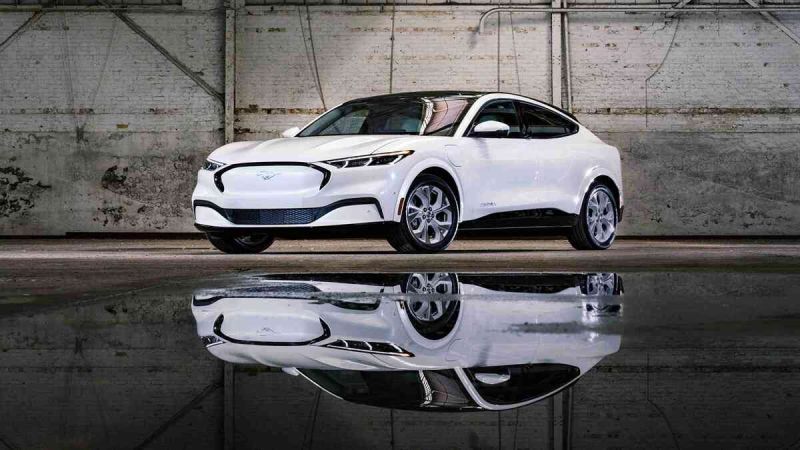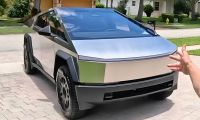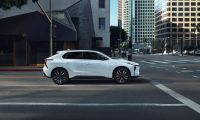About a year or so ago, there was an interesting story that made the rounds of many information networks. I will let you know about the problem because it was quite interesting. It seems that at least one garage in New York City collapsed, and there didn’t seem to be a reason for it.
With the number of older garages in New York and other major cities, they had to find the answer to this problem. After all, investigators reasoned at the time, there had to be an answer to this problem.
It took months to find the problem as researchers tried to crack its code. They could not let it occur randomly.
Looking closely at the problem, investigators tried to figure out the problem from just about every angle imaginable. There seemed, at that time, to be no good reason for a perfect parking garage to fall in on itself, possibly injuring or killing users.
One thing they noticed was that there were many electric vehicles (EVs) in the garage's rubble. The interesting thing to the probers was that the EVs were at the bottom of the rubble, with lighter-weight vehicles on top.
That gave them a pretty good idea of why the garage collapsed, but there was no seeming reason for it. Indeed, the investigators looked at reports of other garage problems and speculated about just why the garages collapsed.
None of the parking garages was super-old—most had been built in the 1970s and 1980s—yet they still collapsed.
Indeed, it was a problem because there were any number of smaller garages of similar construction—reinforced concrete—that should have been able to withstand constant use as nightly parking garages. There didn’t seem to be rhyme or reason for this to have happened.
Now, if it only happened on an occasion, then they could have just put it down to poor construction techniques. But when it happened more than once, when the “random mix” of vehicles kept on showing that EVs were at the top of the debris, and when plans were in place to use these garages until some years to come, the problems began to suspect there was a very bad problem in the offing.
The problem is quite obvious. Imagine a dangerous parking facility that would require the destruction of the parking facility. One of the keys that helped point them in the right direction was the height. None of the failed garages were terribly tall. They were in the five- to seven-story range, and they were attached to provide parkers with the convenience of using the facilities to keep their EVs off the street.
John Goreham, a senior reporter for Torque News put his fingers on the pulse of this story a couple of weeks ago when he did a deep dive into the weight difference between EVs and other vehicles.
Let’s let John tell you the story:
Says John, also a skilled automotive engineer:
Many negative stories about battery-electric vehicles (BEVs) are grounded in the fact that EVs are heavier than conventionally powered vehicles of similar size and passenger volume. The pro-EV crowd says the stories are nonsense since the weight of EVs is “similar” to conventional vehicles. The other side disagrees since they wrote stories based on the weight of EVs being a significant factor. Let’s not use a straw man argument about these stories. Here are some specific stories that cast BEVs in a negative light that are based on the EVs having a heavier weight:
In this story, your author will not choose a side. Instead, I’ll lay out facts related to electric vehicles. For the weight of the vehicles in this story, I will use Motor Trend test and review data for the weight of the vehicles listed. This is a respectable outlet, and I prefer to use their measurements than manufacturer’s data when available.
When it comes to delivery data, there are only two segments that matter: sedans and crossover SUVs. That’s because the auto industry has not yet moved toward electric trucks in great numbers. That is the direction the industry seems to be heading, but the GMC Hummer, Ford F-150 Lightning, the Rivian R1T, and the Tesla Cybertruck don’t add up to a hill of beans in terms of ownership numbers yet. Massive SUVs from Hummer and large SUVs from Rivian and Kia are in production, but again, relative to the volume of sedans and crossover SUVs, they don’t add up to any meaningful numbers. We will do a separate story on those future players.
How Much Heavier Are Battery-Electric Sedans Compared to Other Types of Cars?
Our first analysis examines the top-selling battery-electric sedan, the Tesla Model 3. For our comparison, we selected the Standard Range, rear-wheel drive version of the Model 3. It has less mass than the other Model 3 trims, so any contrast with other types of vehicles will favor the Model 3. In other words, we are being kind to the EV here. For comparison, we chose a variety of popular and high-volume cars similar in size to the Model 3. The Prius Prime is a plug-in hybrid-electric vehicle and a top seller of its type, so we used it even though it is a smidge smaller and technically a five-door hatchback.
Our analysis revealed that the Tesla Model 3 SR, in its rear-wheel drive trim, has an additional 846 pounds, 27% more than the conventionally powered Honda Civic's weight, which is virtually identical in size. The Model 3 is 821 pounds heavier than a Hyundai Elantra Hybrid-electric vehicle, which equates to a 26% difference in mass. The Prius Prime is a plug-in hybrid-electric vehicle. The U.S. Department of Energy considers PHEVs “EVs.” That drives the EVangelists crazy, but it is what it is. The PHEV is 295 pounds lighter than the BEV in our comparison, so it is roughly half-way between the conventional car and a BEV in terms of weight.
The Model Y is the top-selling BEV, and we used its least expensive AWD version for our weight comparison since it is a crossover SUV. The RAV4 and the CR-V are the closest two top-sellers in its size category. The RAV4 is available in three different powertrain configurations. Its PHEV version is slightly heavier than the Tesla Model Y BEV. The Model Y is 1,000 pounds greater in mass than the RAV4 base trim, which equates to about a 30% heavier weight.
Weight Comparison - Battery Electric Vehicles vs. Conventionally-Powered Vehicles
Our data shows that electric sedans are about 821 pounds heavier than comparably sized conventionally powered sedans, a 27% weight disparity. The Model Y electric crossover SUV is 1,000 pounds heavier than a comparably sized conventionally powered crossover SUV, a 30% weight disparity.
Charts and images by John Goreham.
John Goreham is an experienced New England Motor Press Association member and expert vehicle tester. John completed an engineering program focusing on electric vehicles, followed by two decades of work in high-tech, biopharma, and the automotive supply chain before becoming a news contributor. In addition to his eleven years of work at Torque News, John has published thousands of articles and reviews at American news outlets. He is known for offering unfiltered opinions on vehicle topics. You can follow John on Twitter, and connect with him at Linkedin.
Electric Vehicle News and Reviews
Interestingly, John explains why the garages may have collapsed tracks very closely. The investigator found the same issues. It looks like there is a problem waiting to happen unless they choose to tear down many of these smaller garages and rebuild them with the weight of EVs in mind.
Marc Stern has been an automotive writer since 1971. His automotive articles have appeared in venues including Popular Mechanics, Mechanix Illustrated, AutoWeek, SuperStock, Trailer Life, Old Cars Weekly, Special Interest Autos, and others. You can follow Marc on Twitter or Facebook.












Comments
My neighbour has three cars,…
Permalink
My neighbour has three cars, one of which is an EV. It so happens that his driveway is more dented where the EV has been parked for years. Interesting.